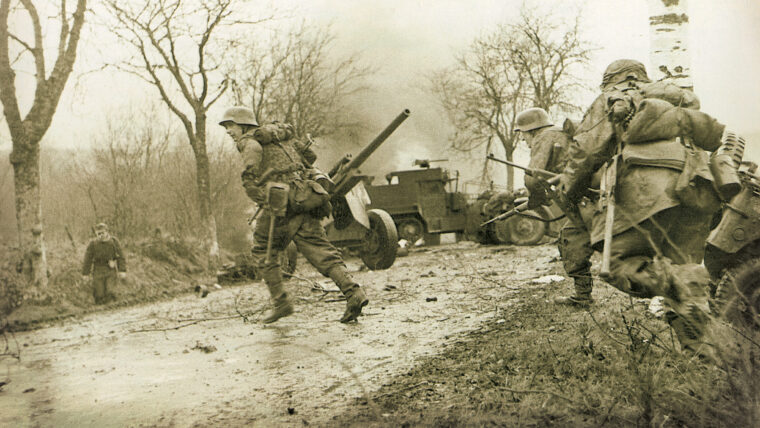
European Theater
The Malmédy Massacre and the Battle of the Bulge
By Major General Michael ReynoldsMalmédy is an attractive and prosperous town situated in eastern Belgium, 15 miles from the German border. Read more
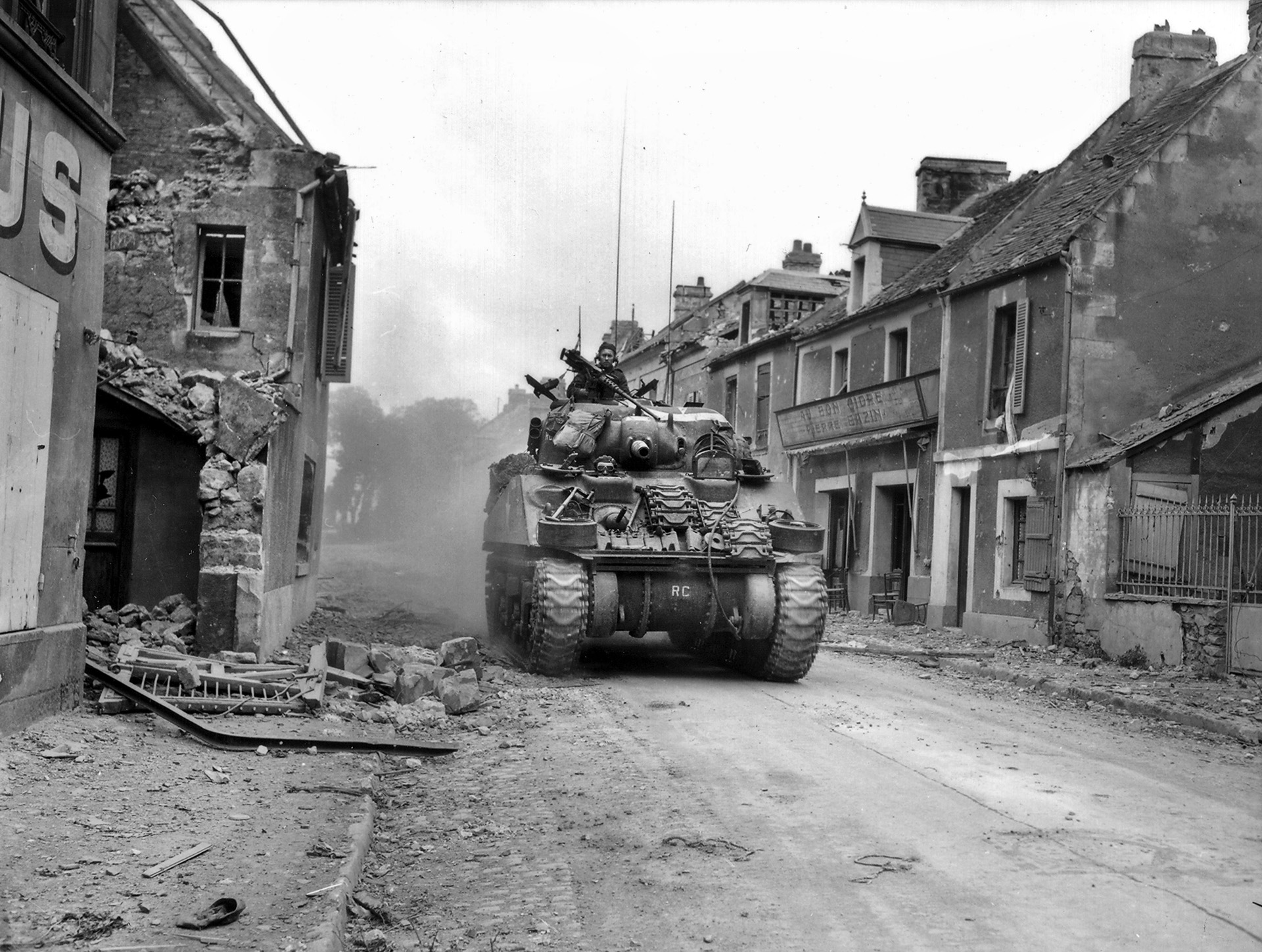
The European Theater of Operations (ETO) during World War II is generally regarded as the area of military confrontation between the Allied powers and Nazi Germany and Fascist Italy. The European Theater encompassed the Atlantic, Mediterranean, Eastern Front, Western Front, and Arctic areas of operation.

European Theater
Malmédy is an attractive and prosperous town situated in eastern Belgium, 15 miles from the German border. Read more

European Theater
“I jammed the throttle wide open and, attacking the Me-109 from the port quarter, fired one burst of four seconds and three bursts of two seconds each,” Pilot Officer William R. Read more
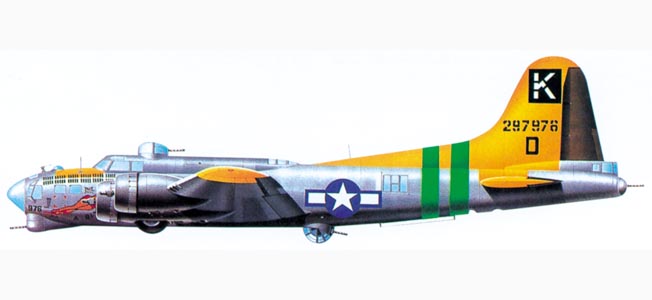
European Theater
The B-17 Flying Fortress was the most celebrated four-engine strategic bomber of World War II, but like many other aircraft that achieved lasting fame, it barely made it into production. Read more
European Theater
When Pearl Witherington Cornioley died quietly in 2008 at the age of 93 in a retirement home in the Loire Valley of France, some who thought they knew her well may have been surprised to learn that she had risked her life during World War II as an agent for the British Special Operations Executive (SOE). Read more
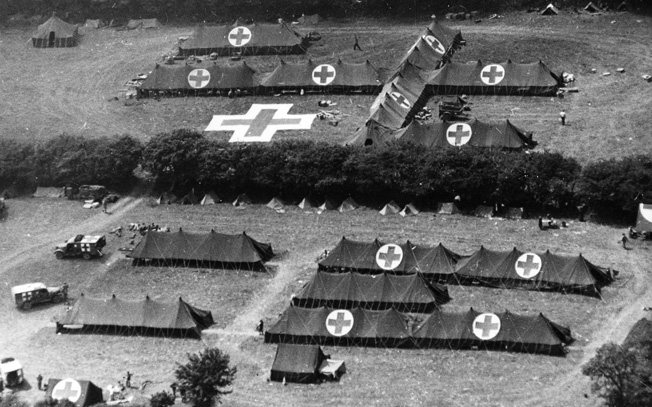
European Theater
In October 1944, Army nurse Lieutenant Frances Slanger of the 45th Field Hospital somewhere in Europe wrote a letter to Stars and Stripes, the Army newspaper, to express her admiration of the American soldier. Read more
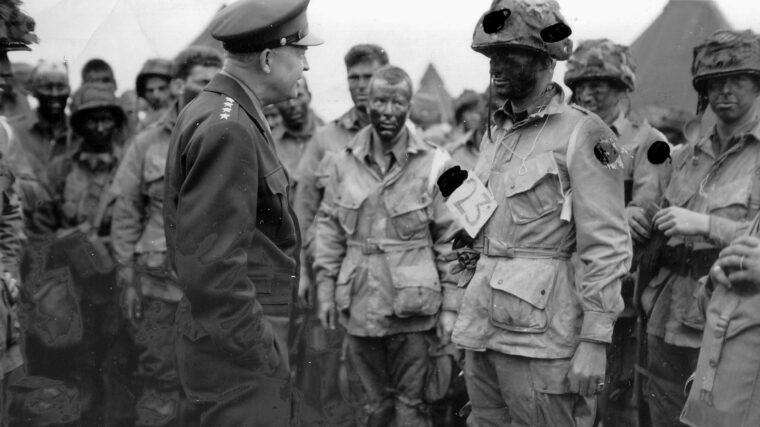
European Theater
In one of the most recognized photographs taken by U.S. Army cameramen during World War II, General Dwight D. Read more
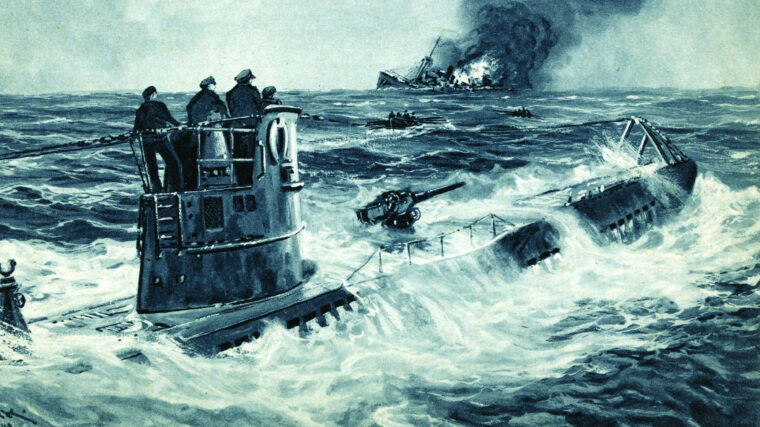
European Theater
America was not at war, but American sailors were dying when American-owned ships were torpedoed by German submarines. Read more
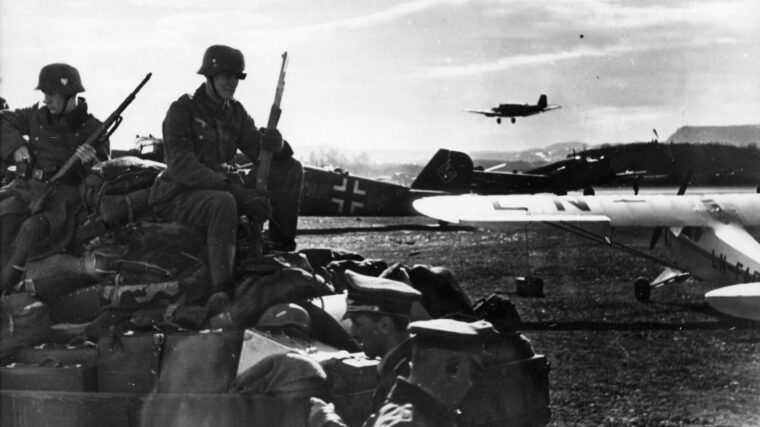
European Theater
The second week in April 1940 was a stormy period in the North and Norwegian Seas. The weather deteriorated during April 7, with low cloud cover and fog. Read more
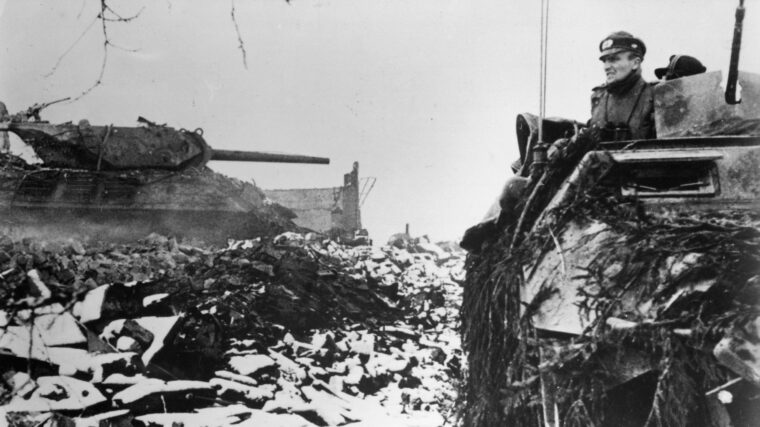
European Theater
In December 1944, the Ardennes front or “ghost front” was an area where either veteran Allied units rotated in to rest and recover from terrible combat losses or where new, untested units arrived to gather some combat experience from the minor skirmishes that would occasionally flare up. Read more
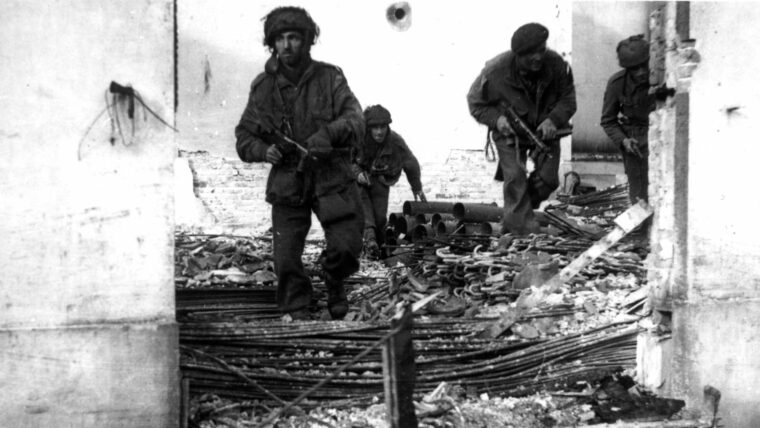
European Theater
The Hollywood military film devotee will remember the beginning of the epic, A Bridge Too Far, when a young British airborne officer named Fuller informs Lt. Read more
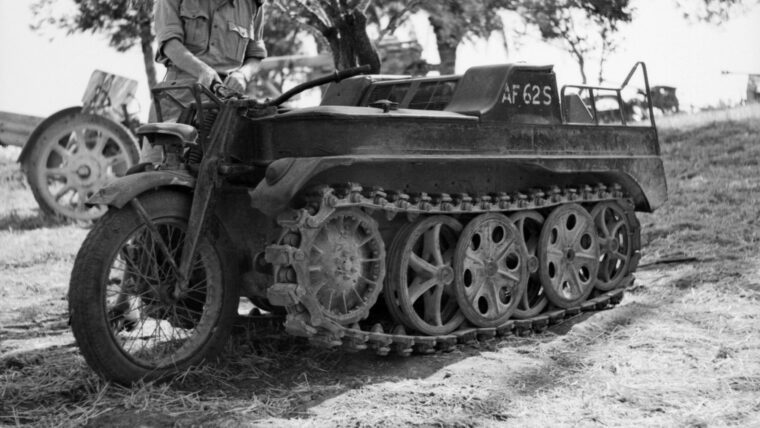
European Theater
The first published photo of one of the odd—but highly versatile —frontline vehicles of World War II appeared on the cover of the July 1942 edition of German Propaganda Minister Dr. Read more
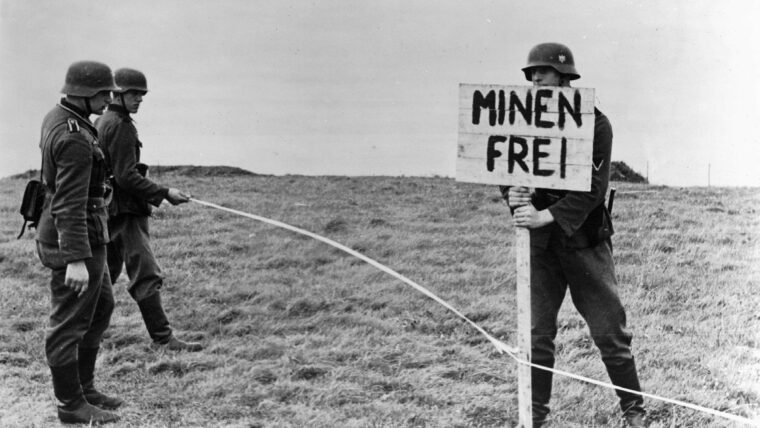
European Theater
German Teller mines were insidious weapons—killing or maiming thousands of Allied soldiers and civilians. The Wehrmact employed others, too, to great effect during the Second World War. Read more
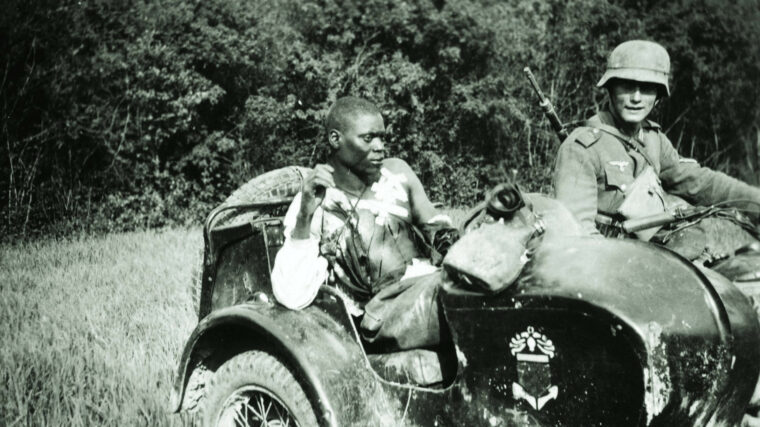
European Theater
On May 13, 1940, the German army invaded France, crossing the River Meuse at Sedan. Upon France’s capitulation, the Franco-German armistice was signed on June 22, and a portion of France was placed under German occupation, with the remaining area ostensibly left to its own, with the Vichy collaborationist government in control. Read more
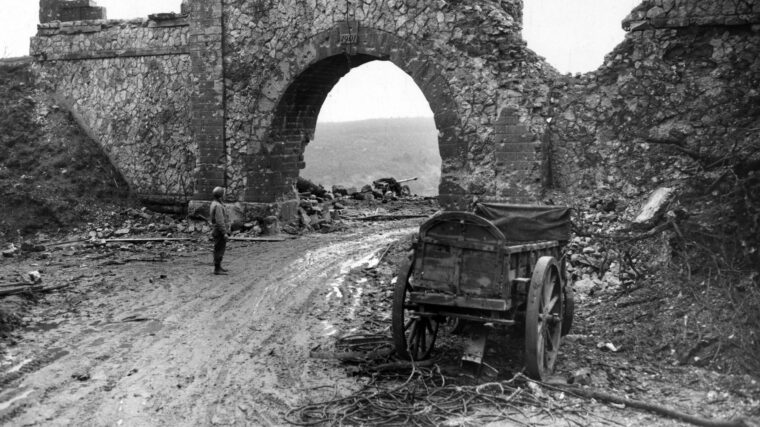
European Theater
Before retreating from Fort Driant, Private Tom Tucker lit the fuse on 6,000 pounds of explosives. “We pulled the fuse lighter and took off,” recalled Tucker. Read more
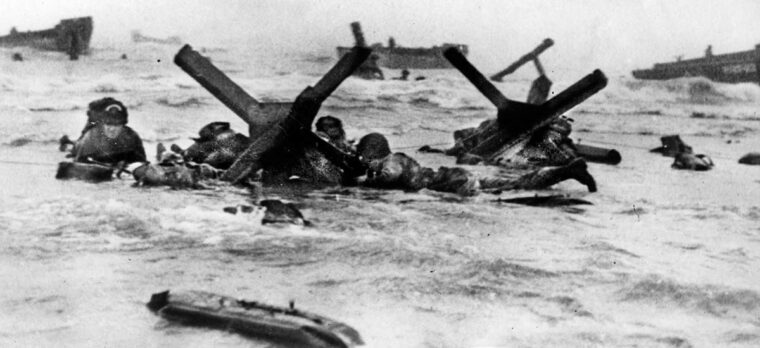
European Theater
Nineteen-year-old army combat engineer Jay Rencher blinked the salt spray from his eyes, filled his lungs, and again plunged beneath the cold, roiling waves. Read more
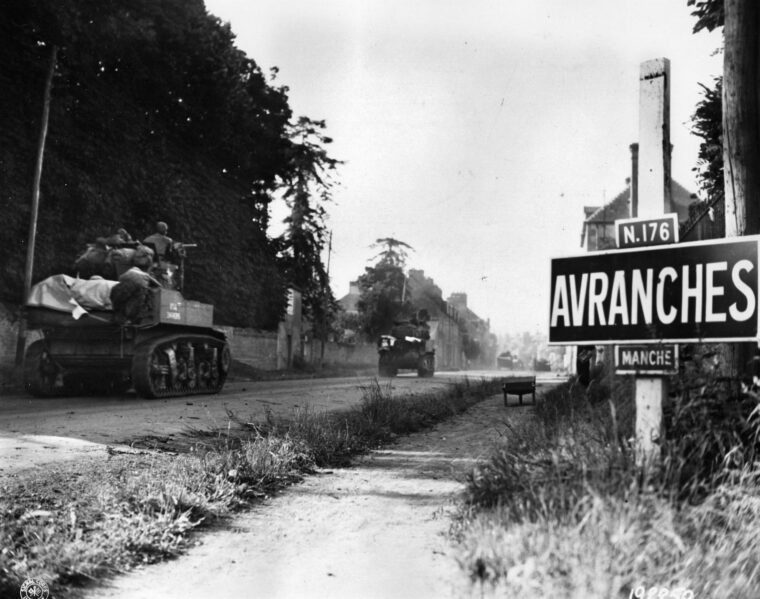
European Theater
Lieutenant General Omar Bradley had reason to be pleased by the last week of July 1944. His First Army had scratched out a substantial foothold on the Normandy coast, capturing three times more French territory than his British allies. Read more
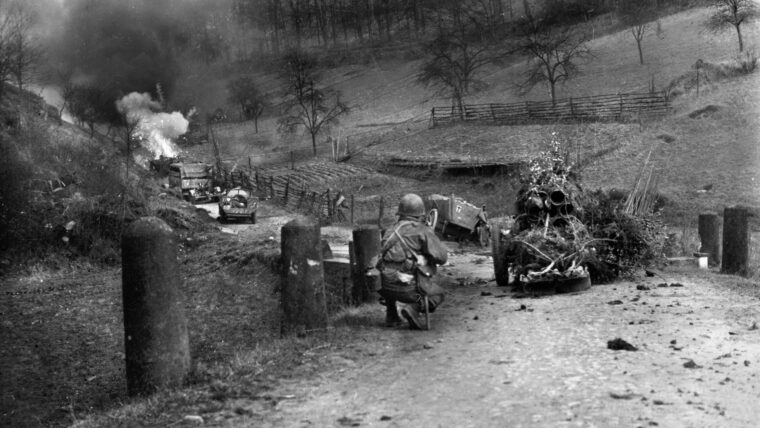
European Theater
On September 5, 1944, American intelligence estimates of German forces in the sector of the 80th Infantry Division, between Nancy and Metz in northeastern France, described scattered units and limited defenses along the east bank of the Moselle River. Read more
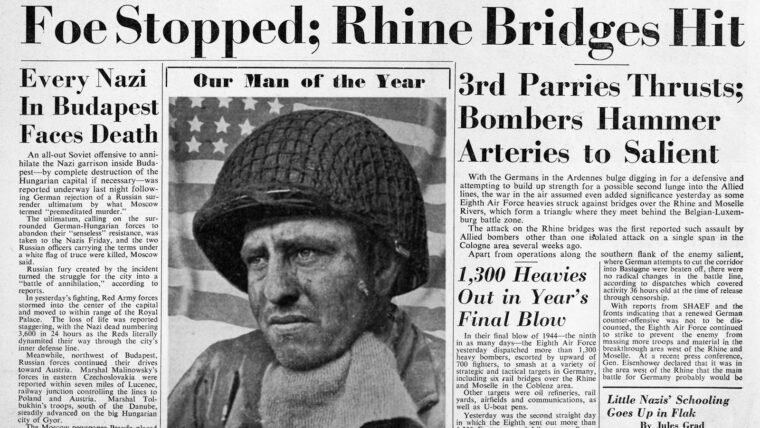
European Theater
During the closing days of 1944, editors at the London edition of Stars and Stripes decided to select a frontline GI as “Our Man of the Year.” Read more
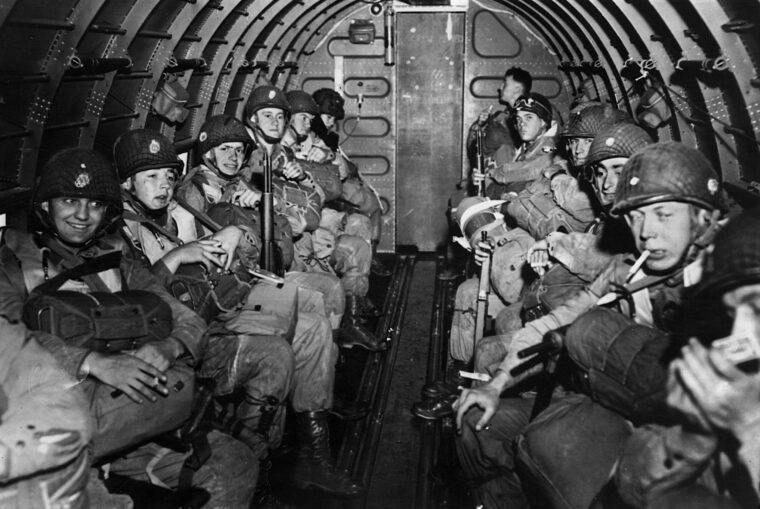
European Theater
Reginald Alexander was born in Gardnerville, Nevada, in 1924 to Scottish émigré parents who were originally from Westcolvin, Scotland. Read more
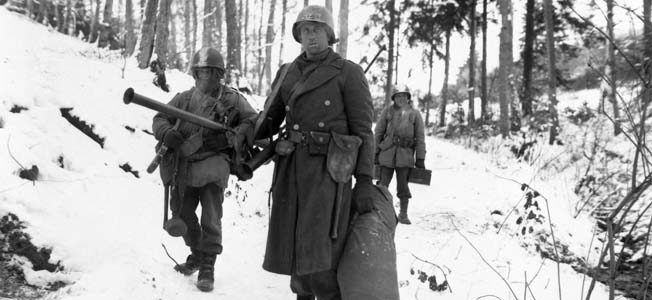
European Theater
During the Battle of the Bulge, Adolf Hitler launched his last great counteroffensive along the Western Front. From full armored divisions running on gasoline fumes to “American schools” teaching spies how to pose as Allied soldiers, Hitler used everything in his arsenal to try to turn the tide of the war. Read more